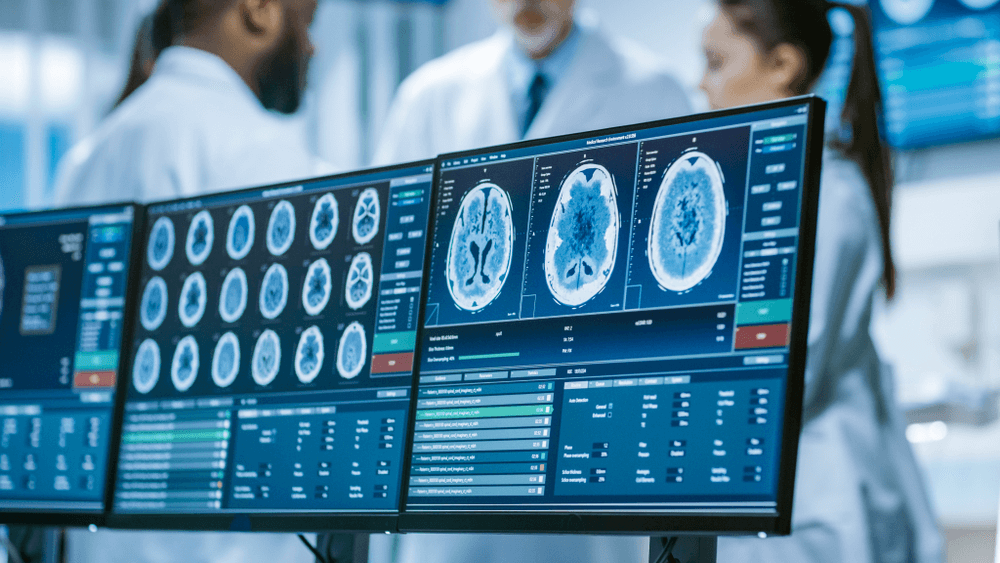De-identifying medical imaging data is crucial for creating high-quality training datasets that protect patient privacy.
This process removes all potential patient identifiers from medical images and associated data before use in machine learning and artificial intelligence systems.
In this comprehensive guide, we will cover best practices for de-identifying patient data like MRIs, X-rays, and CT scans to produce HIPAA-compliant datasets for medical imaging model training. You’ll learn:
- Key principles for de-identifying health data
- Specific steps to anonymize medical images
- How to balance privacy and utility
- Tools and techniques to automate parts of the pipeline
Follow along for actionable advice on constructing useful imaging sets that rigorously preserve confidentiality.
Why De-identify Patient Data?
Medical datasets drive progress in analytical applications like diagnostic assistants, image segmentation, treatment planning, and surgical support systems.
High-quality training data leads to better model performance. However, using patient data raises crucial privacy considerations:
- Patient data contains sensitive personal information – Names, birth dates, faces, tattoos, etc. can all contribute to re-identification.
- Regulations like HIPAA restrict medical data usage – De-identification is necessary for many applications.
- Patients deserve confidentiality protections – Respecting privacy builds trust in healthcare AI.
De-identifying data mitigates these risks while enabling the safe, legal use of patient information to advance medical imaging AI.
De-Identification Principles and Techniques
Multiple principles guide health data de-identification:
- Remove all primary patient identifiers – Names, ID numbers, contact info, etc. must be deleted.
- Obscure secondary identifiers – Dates, locations, account numbers, etc.—need abstraction or generalization.
- Preserve maximum data utility – Retain as much useful signal in images and metadata as possible.
- Track provenance – Document data sources, cleaning steps, and schemas.
- Use formal privacy models – Validate de-identification mathematically, e.g. with k-anonymity.
Hybrid techniques that combine multiple methods tend to perform best:
- Suppression – Delete identifiers entirely
- Generalization – Broaden dates and locations
- Perturbation – Add random noise to dates
- Abstraction – Encode details ambiguously
Table showing various de-identification techniques:
| Method | Example |
| Suppression | Remove patient name |
| Generalization | Modify birthdate to only show birth year |
| Perturbation | Add ±3 days noise to dates |
| Abstraction | Show city only rather than full address |
Automation tools can also assist by detecting and redacting identifiers or generating synthetic datasets. However, manual review is still essential to locate tricky identifiers. Thoughtfully combining various techniques and tools based on dataset specifics leads to optimal results.
Step-by-Step Guide to Anonymizing Medical Images
With the foundations covered, let’s walk through a step-by-step guide for properly de-identifying medical images:
1. Inventory all data fields associated with images
List out every data element that accompanies medical images – metadata, labels, text reports, etc. Identify explicit identifiers like names/dates, as well as quasi-identifiers like ages that in combination could pinpoint individuals.
2. Design an anonymization plan
For each data field, determine an appropriate anonymization strategy based on utility and identifiability. Common plans include:
- Delete highly identifiable data unused for analysis (names, contact info)
- Generalize dates and locations to larger units such as years or cities
- Adjust ages by ± a random number of years to retain age signal
- Assign arbitrary ID numbers to replace medical record numbers
3. De-identify images
Scrutinize images themselves for potential identifiers like faces, tattoos, implants with ID codes, or staff/hospital names. Manually edit images to obscure, blur, or crop out identifying sections as feasible while preserving analytical usefulness.
4. Validate anonymization
Use mathematical anonymization tests like k-anonymity models that assign risk scores to datasets. Fix any insufficiently de-identified elements.
Perform visual spot checks – can you deduce patient identities from the transformed dataset? Bias testing can also help catch residual demographic signatures.
5. Document process fully
Detail the methodology used to produce the final anonymized dataset, including source data, transformation steps, schemas, assumptions, and known limitations. Thorough documentation builds necessary trust in data provenance and handling.

Balancing Utility and Privacy
Constructing useful medical imaging sets requires striking the right balance between value and privacy:
- Retain essential analytical detail – Don’t strip so much content that predictions become impossible. But equally…
- Rigorously protect confidentiality – Don’t leave identifiable artifacts that put patients at risk.
Finding this equilibrium depends deeply on the specific analytical task. For example, scans used to develop stroke lesion detectors likely require highly detailed brains to train effectively.
In contrast, datasets that classify chest x-rays as normal/abnormal can utilize higher levels of anatomical abstraction.
Close collaboration with both medical and machine learning experts allows harmonizing utility and privacy given application needs.
Models can also be trained on synthetic or vendor datasets, then fine-tuned on smaller amounts of real, de-identified patient data to further shrink privacy risks.


